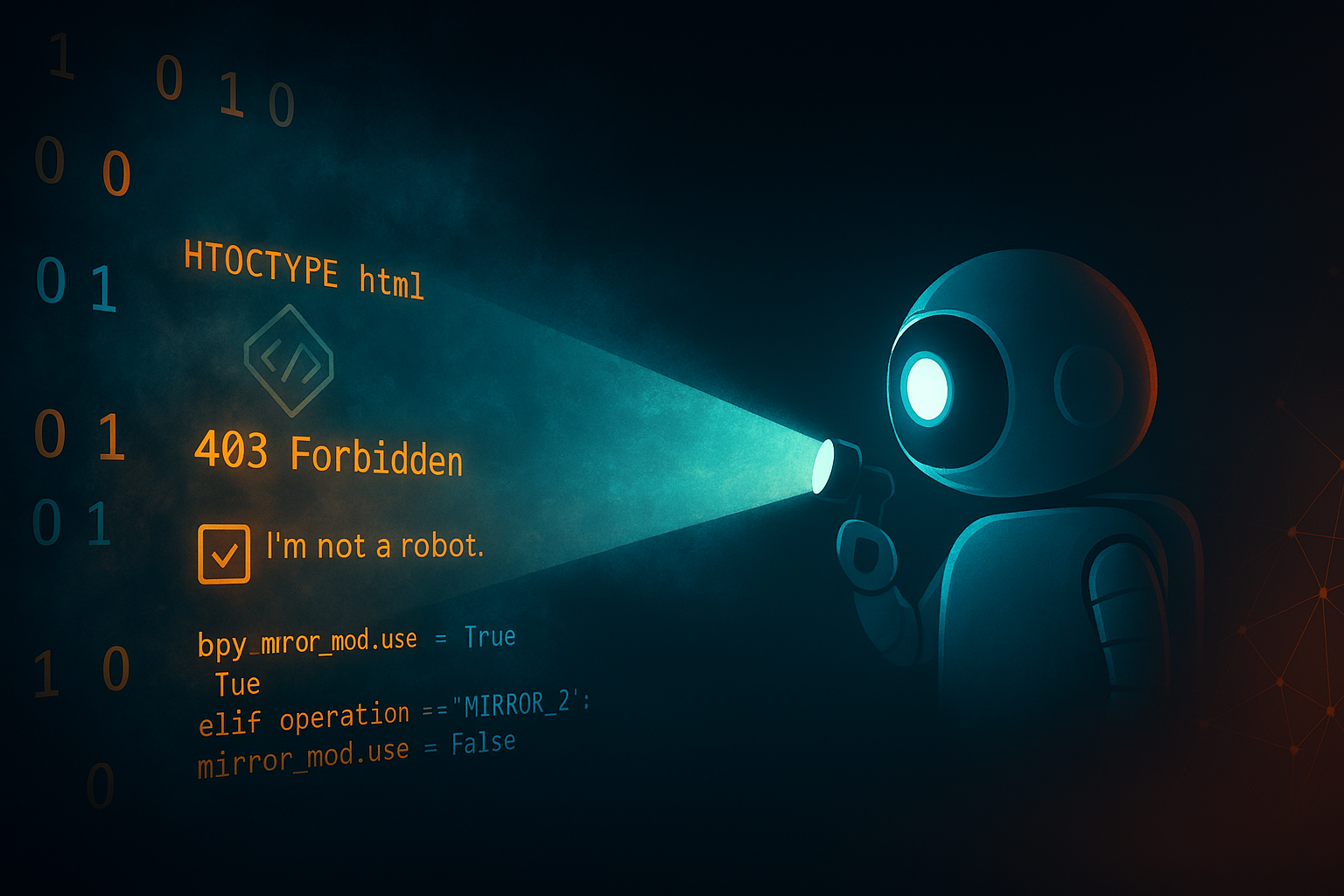RAG is a method used by AI agents to provide more accurate and up-to-date answers by combining real-time search with language generation. For any organisation with a web presence, this shift means that retrievability - the ability of a web page to be located, understood, and used by AI agents - has become a critical performance factor.
What Is RAG?
Retrieval-Augmented Generation is a hybrid approach used in many AI systems. It works by:
- Retrieving information from external sources such as websites, databases, or internal document stores.
- Generating a response using a large language model (LLM), with the retrieved content acting as reference material.
Instead of relying solely on pre-trained data, RAG systems bring in live or recent content to enhance the quality of the AI's answers. This is especially useful when answering time-sensitive or domain-specific queries.
For example, if a user asks, "What is the latest interest rate from the Reserve Bank?", a RAG system would search authoritative sources for current rates and then generate a response using that information.
Why Retrieval Matters for Web Content
The retrieval step is only as effective as the content it can access. If an AI agent cannot reach, interpret, or extract useful context from a page, that page is unlikely to be used in the AI’s response. This makes web retrievability a core concern for any organisation looking to remain visible to AI-driven systems.
There are several factors that affect whether a site or page is considered retrievable:
- Accessibility: Whether the page is publicly reachable without login or CAPTCHA barriers.
- Structure: Whether the page content is in a machine-readable format, such as HTML with semantic tags, rather than hidden in images or JavaScript.
- Relevance signals: Whether the page includes keywords, headings, and metadata that make its purpose clear to search and retrieval systems.
If any of these elements are missing or misconfigured, AI agents may bypass the page entirely, even if it is relevant.
RAG and AI Agents on the Web
AI agents, including tools integrated into search engines, chat assistants, and workflow automation platforms, now perform many web-based information tasks. These agents may:
- Locate and summarise product information
- Compare services across providers
- Fetch live data to answer business queries
- Pull knowledge from documentation and FAQs
All of these tasks rely on retrieving pages that are easy for AI systems to parse and rank. When agents cannot retrieve useful content, the AI either skips over the page or relies on outdated or unrelated data, reducing the quality of the result.
Common Barriers to Retrieval
Several technical and structural issues can prevent an AI agent from successfully retrieving a page:
1. Anti-Bot Mechanisms
Web services that block automated access using technologies like Cloudflare, CAPTCHA, or JavaScript challenges can prevent AI agents from accessing pages. While these tools protect against abuse, they also interfere with legitimate AI-driven search and summarisation.
2. Poor Semantic Structure
Pages that lack proper use of headings, semantic HTML, or structured data may not communicate their relevance clearly. AI systems may misinterpret the page’s purpose or overlook key information embedded in the layout.
3. Thin or Duplicate Content
If a page has little unique content, or simply replicates material from elsewhere, retrieval systems may downgrade its importance or fail to identify its relevance to a user query.
4. Deep or Hidden Navigation
Content that requires multiple clicks, form submissions, or complex interactions may not be reachable by automated agents using standard retrieval methods.
Only content that can be retrieved and understood can be used by RAG systems. This makes retrievability the first step in AI relevance.
Why This Is a RAG Problem
Retrieval-Augmented Generation begins with content acquisition. If a page cannot be retrieved, it cannot be included in the generation process, and its information will not reach the user. This is not a minor technical challenge. It is a core dependency of how modern AI agents function.
The generation stage in RAG depends on the quality of input gathered during retrieval. A poorly retrieved or missing document leads to inaccurate or irrelevant output, regardless of how advanced the language model may be.
To illustrate this dependency:
- A product page blocked by a bot firewall will be invisible to AI agents trying to compare similar products.
- A support article embedded in JavaScript may be unreadable, causing AI to miss critical troubleshooting steps.
- A knowledge base without metadata may be bypassed entirely, even if it contains relevant content.
These issues affect not just AI tools like ChatGPT or Claude but also agent-based platforms such as Manus, n8n, and agent-enhanced developer tools like Cursor and Windsurf.
Implications for Organisations with a Web Presence
Organisations that depend on being found - whether by search engines, virtual assistants, or AI tools - must consider how well their web content can be retrieved by automated systems. Traditional SEO practices still matter, but they are no longer sufficient on their own. Web retrievability introduces a new layer of requirements focused specifically on machine accessibility, clarity, and structure.
Improving retrievability does not necessarily require major redesigns. It often involves:
- Ensuring HTML content is properly structured and not hidden behind scripts
- Avoiding unnecessary bot-blocking for publicly available content
- Including descriptive metadata and headings
- Providing clear and accessible URLs
These steps make content easier for AI systems to retrieve, rank, and integrate into their outputs.
AI agents are now part of the audience for web content. As the volume of search-related tasks handled by AI systems grows, so too does the importance of making content retrievable, readable, and reusable by machines as well as humans. Businesses that understand and respond to this shift will be in a stronger position to support both human visitors and AI-driven traffic.

